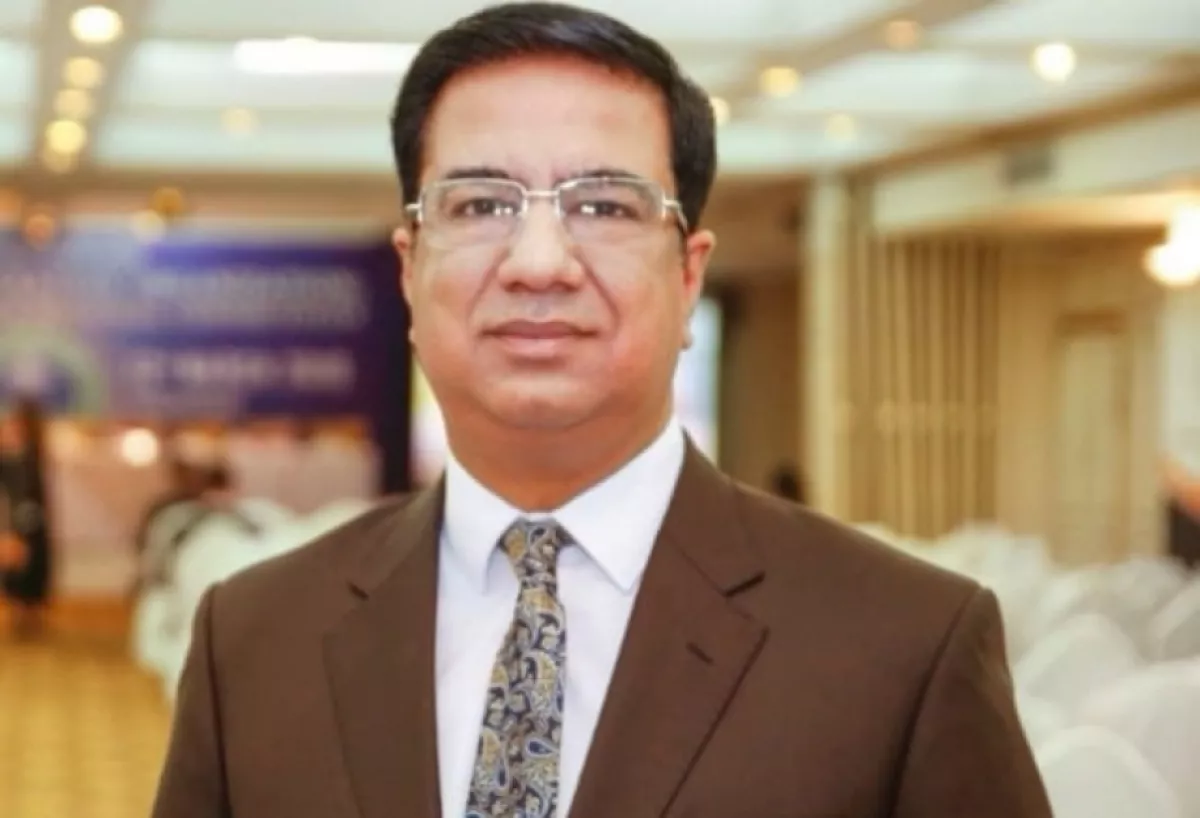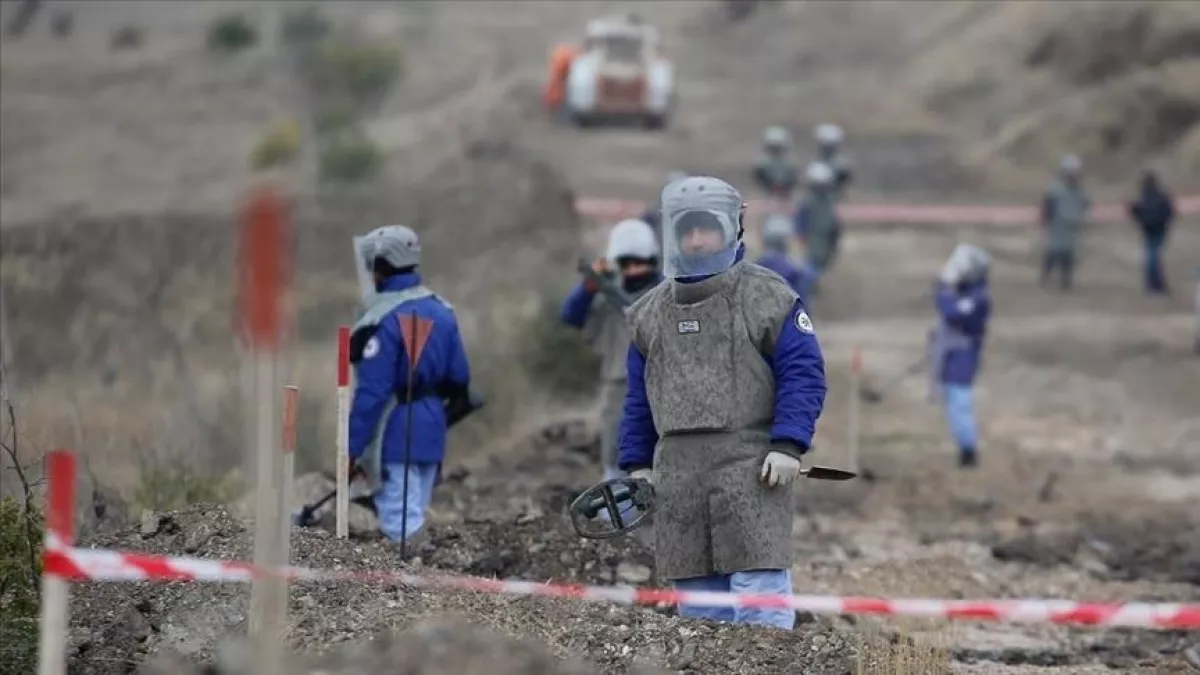Occupation’s deadly legacy: How Armenia's landmines continue to threaten Karabakh Pakistani media on Azerbaijan’s Herculean task of reclaiming its land
The Daily Islamabad Post, a prominent Pakistani newspaper, recently shed light on the persistent mine threat in the Karabakh region of Azerbaijan in a thought-provoking article. Written by Khalid Taimur Akram, a seasoned Pakistani analyst and retired lieutenant colonel specializing in international relations, the piece delves into the complexities of this ongoing issue. We’re pleased to share an adapted version of this insightful article with Caliber.Az readers.

Mines, unexploded devices, and booby traps remain some of the deadliest remnants of Armenia’s nearly three-decade-long occupation of Azerbaijan’s Karabakh region. The occupation left behind severe contamination of vast swathes of land, causing numerous casualties and obstructing post-war reconstruction efforts. Armenia's deliberate placement of landmines in civilian areas has not only sparked an ongoing humanitarian crisis but also severely disrupted economic and agricultural activities in the region.
Scale of mine contamination
Initial estimates suggest that over 1.5 million landmines were planted across Azerbaijan’s territories during the occupation. Since the Second Karabakh War ended in 2020, numerous Azerbaijani citizens have tragically lost their lives due to mine explosions. The scale of the contamination is staggering, with approximately 12% of Azerbaijan’s land contaminated by landmines and unexploded ordnance (UXOs), making it one of the most mine-infested regions globally. The placement of these mines wasn’t limited to military zones; they were also laid along civilian areas such as roads, cemeteries, homes, schools, and even water sources.
The persistent presence of landmines continues to prevent displaced Azerbaijani citizens from returning to their homes, effectively extending the terror of occupation beyond its official end. Mines were strategically placed to maximize their destructive impact on civilians, and their presence has significantly delayed reconstruction efforts. Farmers, shepherds, and villagers who have tried to reclaim their lands are still at risk, as unexploded ordnance lurks beneath the soil. Furthermore, Armenia’s failure to provide accurate minefield maps has left these areas perilous and added a layer of complexity to the recovery process. This omission not only endangers lives but also violates fundamental human rights, such as the right to life, security, and a healthy environment.
Azerbaijan’s demining efforts
Given the gravity of the situation, Azerbaijan has prioritized humanitarian demining as both a national security and development imperative. Since the war’s conclusion, Azerbaijan has initiated various programs to raise awareness and seek international assistance for mine action. In May 2023, Azerbaijan led efforts to include mine clearance as the 18th Sustainable Development Goal (SDG) on the UN agenda. Additionally, the Mine Action Agency of the Republic of Azerbaijan (ANAMA) has worked closely with international partners, such as the United Nations Development Programme (UNDP), to establish the ANAMA-UNDP International Centre of Excellence and Training for Mine Action.
Despite the enormous challenges, Azerbaijan has made significant strides in demining. As of 2024, ANAMA reports that approximately 156,000 hectares have been cleared, with over 151,000 landmines and UXOs neutralized. Currently, 377 specialized teams are dedicated to these operations, working tirelessly to make the land safe for civilian use. However, the scale of contamination remains vast. Newly regained villages, such as those in the Gazakh district, are still heavily infested with landmines. Statistics from 2020 to 2024 show that 379 individuals fell victim to landmines in Eastern Zangezur and Karabakh, with 70 fatalities and 309 severe injuries.
One of the most pressing challenges facing Azerbaijan’s demining efforts is the lack of reliable minefield maps. Initially, Armenian officials denied having such maps, but later agreed to exchange some of them for detained Armenian soldiers. The absence of comprehensive minefield data has significantly increased the cost, difficulty, and danger of clearance operations. Without accurate maps, demining teams are forced to rely on labour-intensive and hazardous detection methods, prolonging the threat to civilians and impeding the rehabilitation of affected areas.

Environmental and economic consequences
Beyond the immediate dangers to human life, landmine contamination has had profound environmental and economic consequences. Large portions of agricultural land have become unusable, directly threatening food security and hindering economic development. Farmers and agricultural workers can no longer safely cultivate the land, and this inability to reclaim agricultural territories is a major barrier to economic revitalization. Infrastructure projects essential for the region’s recovery have also been delayed due to the need for extensive demining efforts. According to the International Committee of the Red Cross (ICRC), since the early 1990s, landmines in Karabakh have caused numerous casualties, with over 50% of the victims being civilians. The destruction of farmlands, forests, and water resources due to mine contamination further exacerbates the region’s economic challenges, making sustainable development in the liberated areas incredibly difficult.
Armenia's responsibility and international accountability
Armenia bears direct responsibility for the extensive mine contamination in Azerbaijan. The large-scale planting of landmines was a deliberate strategy designed to hinder Azerbaijan’s post-conflict recovery. This act constitutes a war crime under international humanitarian law, and it is crucial for the international community to hold Armenia accountable for its actions. Armenia must be pressured to provide accurate and complete minefield maps. Additionally, global organizations must offer increased support for Azerbaijan’s demining operations, acknowledging the severe humanitarian and environmental consequences of the mine crisis in Karabakh.
The path forward
Landmine contamination in Azerbaijan’s Karabakh region remains one of the country’s most severe humanitarian and security challenges. The legacy of Armenia’s occupation continues to endanger lives, obstruct economic recovery, and prevent the safe return of displaced Azerbaijani citizens. Azerbaijan’s government, in collaboration with ANAMA and international partners, is making commendable progress in its demining efforts. However, the sheer scale of the problem demands sustained global attention and support.
To ensure the safety and well-being of displaced individuals, there must be an acceleration of mine clearance efforts, enhanced international cooperation, and accountability from Armenia. Only through collective international efforts can Karabakh overcome the deadly remnants of war and pave the way for a safer, more prosperous future.
By Tamilla Hasanova








